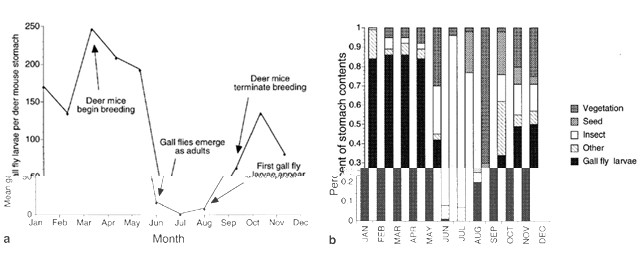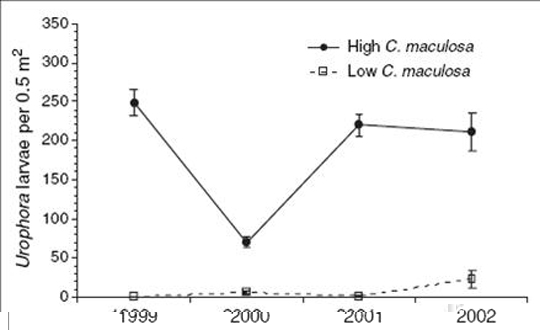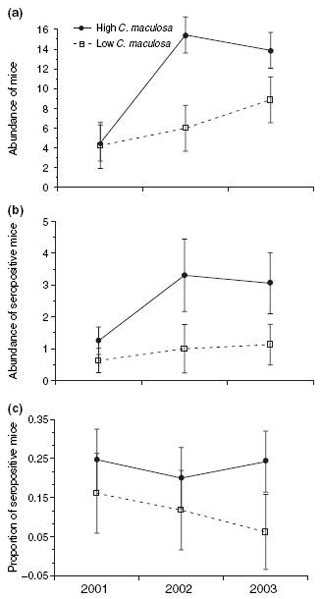

Figure Set 3: Indirect effects of biological control of knapweed.
FIGURE SET

Figure 3.1. Stomach content analysis of deer mice from 1997-1998. Data in (a) represent mean number (+ 1 standard error) of gall fly larvae found per deer mouse (in the stomach contents) each month. The arrows indicate different points in both the life cycle of the deer mouse and the gall fly. Data in (b) depict the percent of different dietary items of the deer mouse that are represented in their stomach contents each month. (From Pearson, D.E., McKelvey, K.S., and L. F. Ruggiero. 2000. Non-target effects of an introduced biological control agent on deer mouse ecology. Oecologia 122: 121-128.)

Figure 3.2. Data points depict the mean density of gall fly larvae (+ 1 standard error) present in two populations of knapweed, one of high density (solid points) and one of low density (open points) across several years (From Pearson, D.E. and Callaway, R.M. 2006. Biological control agents elevate hantavirus by subsidizing deer mouse populations. Ecology Letters 9: 443-450.)

Figure 3.3. Data on deer mice populations (+ 1 standard error) across several years in areas of high density of knapweed (solid points) and low density of knapweed (open points). (a) Abundance of deer mice. (b) Abundance of seropositive mice (mice that are carriers of hantavirus). (c) Proportion of deer mice captured that were seropositive (From Pearson, D.E. and Callaway, R.M. 2006. Biological control agents elevate hantavirus by subsidizing deer mouse populations. Ecology Letters 9: 443-450.)